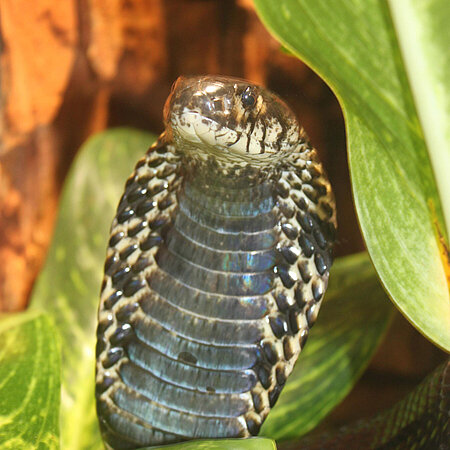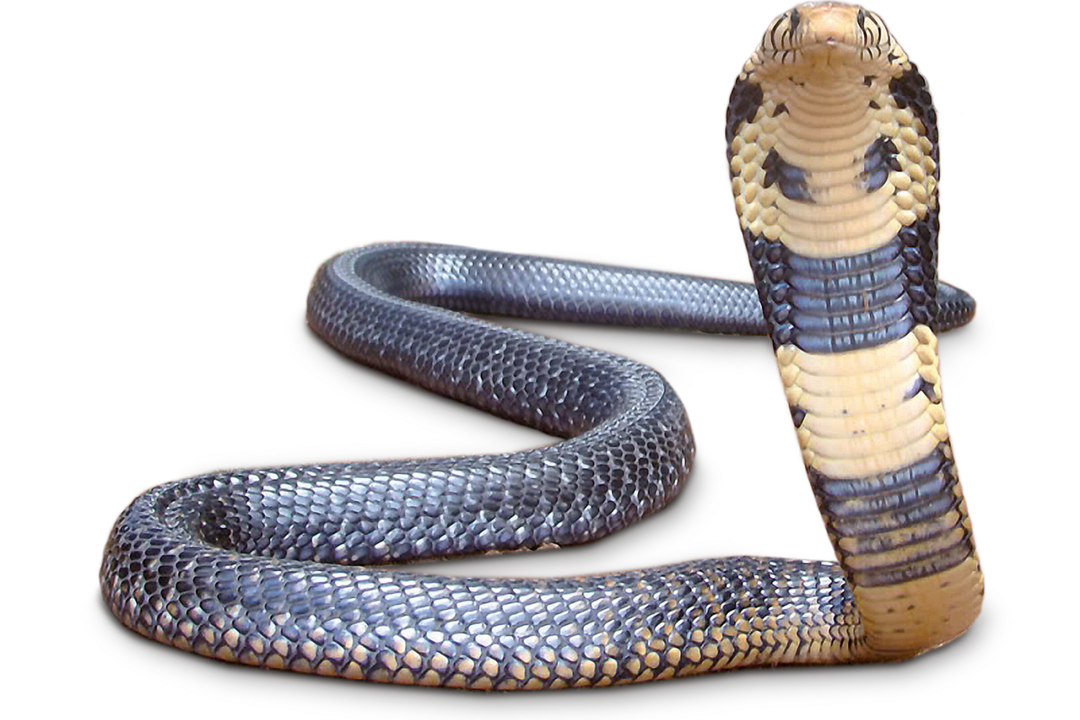Black and whitelipped cobra
Naja melanoleuca

- FamilyElapid snakes (Elapidae)
- HabitatTropical forests
An impressive hood
The black and white-lipped cobra is one of the largest cobra species and the second most venomous cobra in Africa after the Cape cobra. Its toxin can kill a human. When agitated, it raises its forebody and spreads its hood (using ribs in the neck that can flare out), ready to strike.

Habitat
The black and white-lipped cobra prefers lowland moist forests, but can also be found in rice fields and forested mountains up to an altitude of 2,800 m. Its foods include small mammals, birds, bird eggs, lizards, frogs, toads and other snakes. Fish is also on the menu as it is an adept swimmer. Females lay b tween 10 to 15 eggs, which hatch after 70 to 80 days. Hatchlings are typically 35 to 40 cm long at birth.
Most snakes are immune to their own venom because the venom glands contain blood vessels that circulate low levels of the toxins through their body.
Distribution
